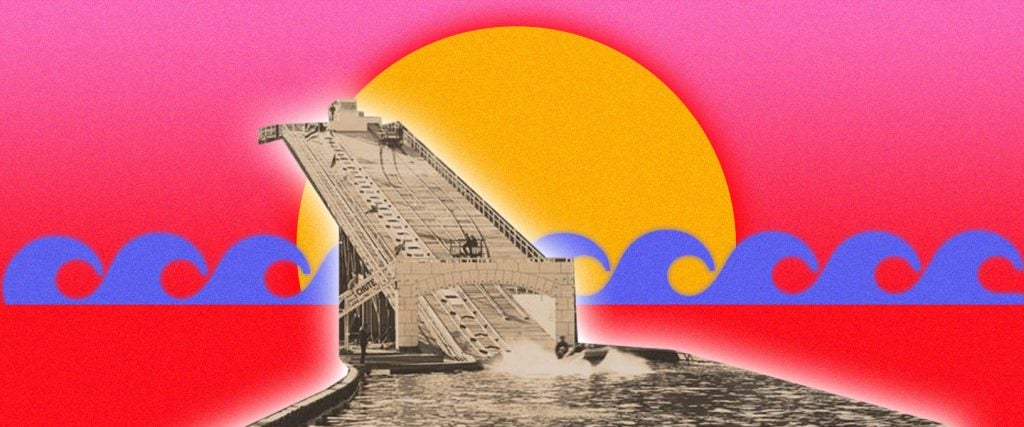It’s the week of Fourth of July. And while we appreciate you being here, we really hope it’s from some stretch of sand or some body of water relaxing enough that your problems can be put on the same kind of ice as the booze in the cooler next to you. If not, throw on your shades anyway, and join us for our weeklong package, “Life’s a Beach,” a celebration of all things sand, sun and summer. Of course, if you’re already on vacation, you’re welcome, too — just be sure to reapply another layer of sunscreen, as these pieces burn bright. Read all of them here.
Waterslides are big, loud and sometimes dangerous — all of which makes them seem distinctly American. But the first iteration of the waterslide was likely born in Christchurch, New Zealand in 1906 as part of an international exhibition, which featured the Wonderland Amusement Park, host to the massive, first-of-its-kind “water chute.”
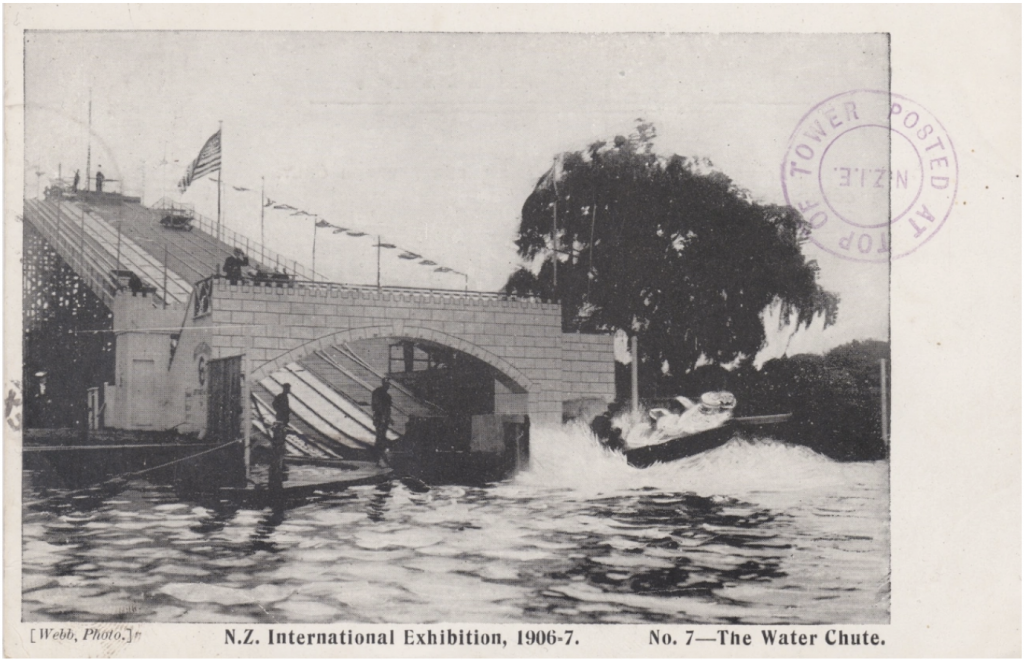
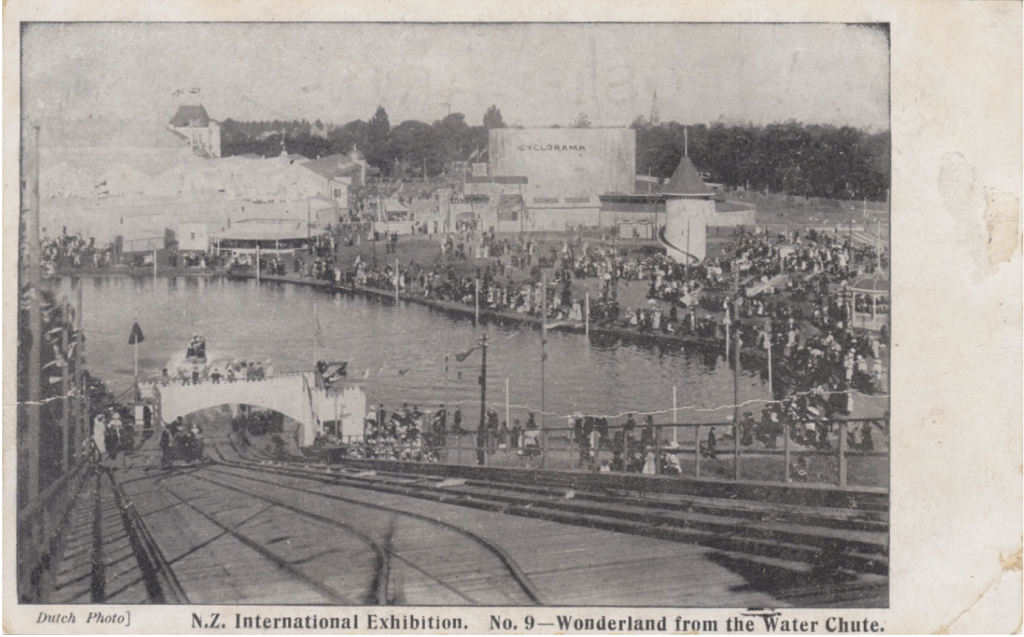
Documentarian and archive producer Lemuel Lyes first stumbled upon the Edwardian waterslide a few years back while collecting vintage postcards. “I don’t usually go out of my way to collect postcards from New Zealand’s Exhibitions (it’s a slippery slope), but the thought of a giant water chute (an even more slippery slope) in Edwardian Christchurch intrigued me,” he writes on his blog History Geek.
Riders sat in boats that had to be hauled up to the top of the chute before flying down a 220-foot drop and hitting a lake at speeds of up to 30 mph. Eventually, they skidded across the water to dry land. According to the New Zealand publication Stuff, a 1907 article in the Evening Post reported of a performer by the name of “Demos” who had his own special way of riding down the chute, much to the onlookers’ delight. “The well-known trick cyclist repeated the feat of riding his machine down the water chute enveloped in flames, and taking a somersault into the artificial lake at the bottom of the incline.”
And as Lyes found in a November 1906 issue of the newspaper the Free Lance, the massive water chute also intrigued Sir Arthur Guinness, Speaker of the House of Representatives in New Zealand, who decided to try the wet and wild slide himself. “Down came the boat with a ‘wharr!’ and there in the bow, with his silk hat pulled over his ears and a hard, point-of-order look in his eye, was the Hon. Speaker,” the article reads. “The boat hit the water as someone said: ‘Point of order!’ but the boat only hurled itself over the water with enormous velocity and the point was lost to the Lancer amidst the shrieks of the girls.”
Governor General William Plunket also took his turn on the water chute, and rode his toboggan “right up to the fence at the end,” a 1906 issue of Grey River Argus notes.
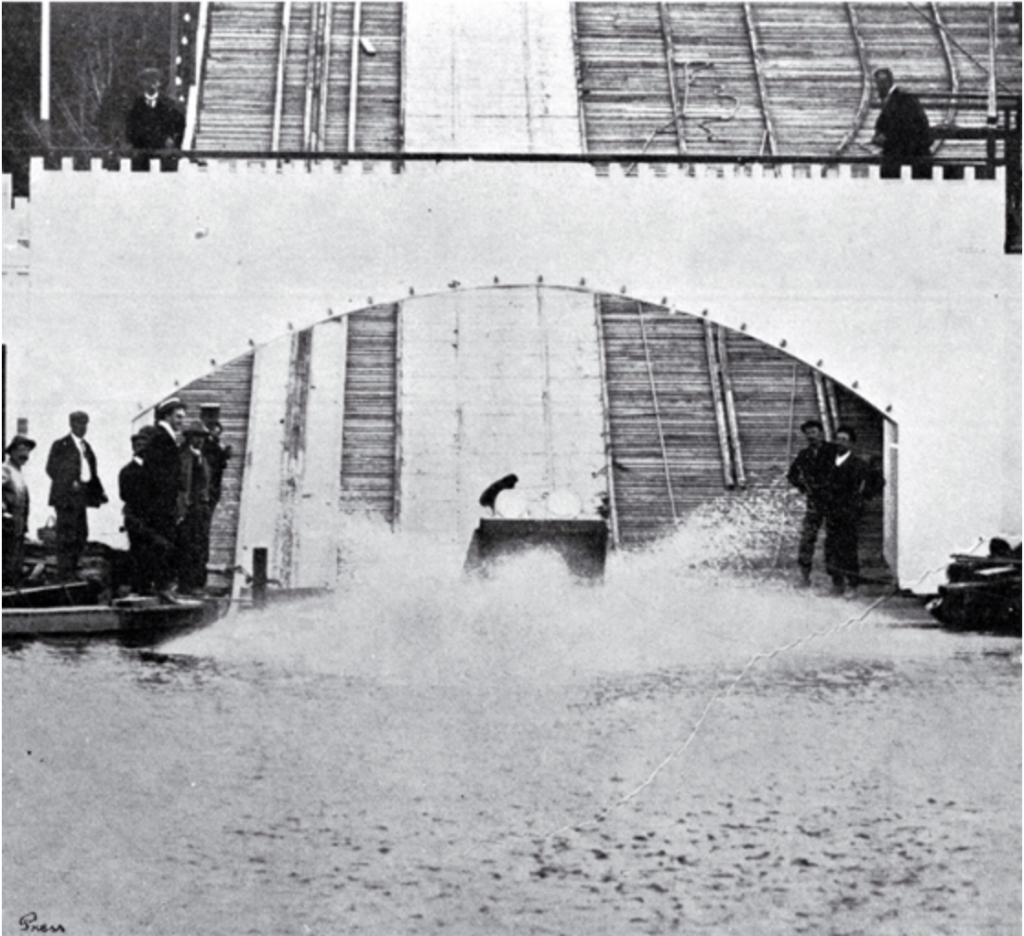
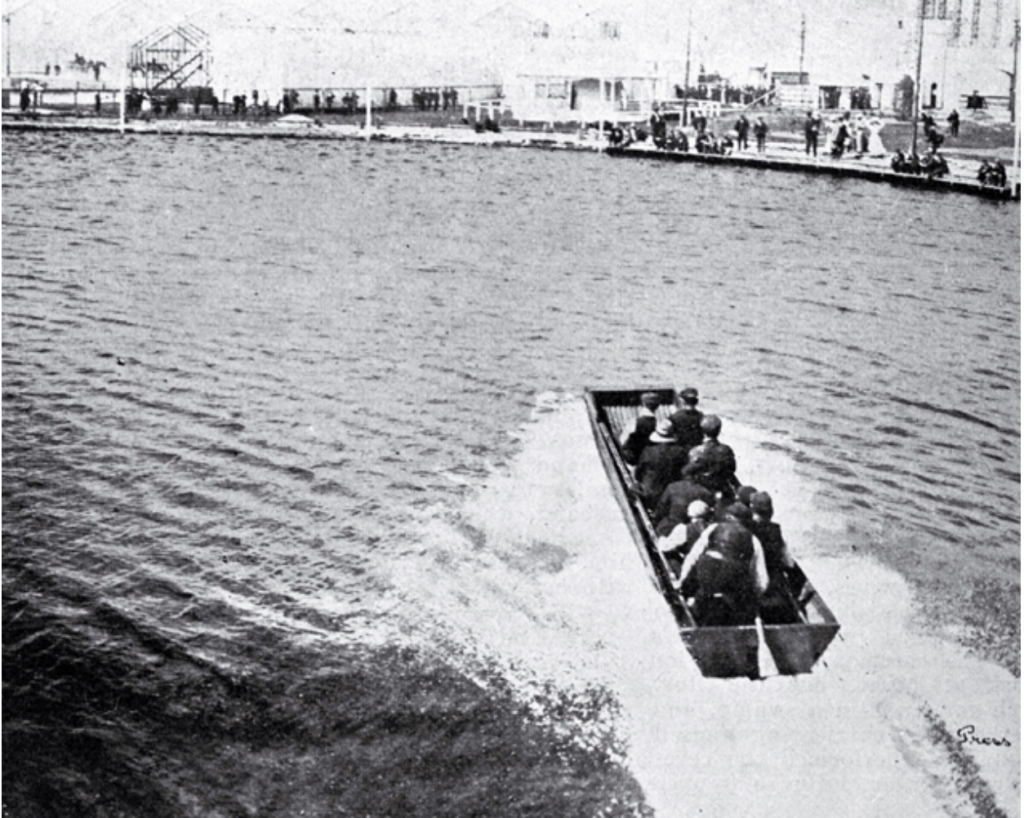
Sadly, Wonderland’s water chute lasted less than six months, as the exhibition ended with “substantial financial loss,” despite bringing in an estimated 2 million tourists. It would later rise again, though, along with other attractions from the amusement park, in Miramar, New Zealand. The chute remained there — and appeared on many more postcards — until the park went bankrupt in 1911.
The water chute was sold to an “Auckland impresario” in 1912, before it went onto its third and final act at the Auckland exhibition of 1913. By 1915, it was auctioned off for a little over $160, and like an eccentric celebrity, hasn’t made any public appearances since.
These days, the Splash Mountains of the world don’t see too many silk hats, flaming bicycles or screaming politicians, which may be a sign that our waterslides have evolved too far from their humble Kiwi roots. That’s a real shame, because it looks like they really knew how to make a splash.
